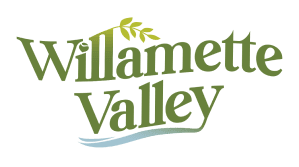Get to Know The Willamette Valley's National Wildlife Refuges
In the early 1900s, President Theodore Roosevelt established the first national wildlife refuge to protect migratory bird communities and their critical habitats. More than a century later, hundreds of national wildlife refuge blanket the United States, protecting open spaces and important natural features for birds, mammals, and more across the United States.
Today, three refuges cover the Willamette Valley—providing marshlands, meadows, wetlands, and other ecosystems for migrating birds, Roosevelt elk, rare butterflies, and even the occasional black bear. (These refuges also protect and preserve historic oak trees, which once dominated the Willamette Valley but are few and far between today.)
So if you're interested in taking photos, birdwatching, hiking, or driving through the region's wildlife refuges, here's what to know about exploring—along with how to have fun and stay safe while following refuge rules.
Baskett Slough National Wildlife Refuge

The sun sets at Baskett Slough National Wildlife Refuge. (Photo by John Shulte / Photo courtesy Willamette Valley National Wildlife Refuge Complex)
Baskett Slough National Wildlife Refuge's location on open farmland at the eastern edge of the Coast Range foothills gives it a mild, rainy climate that suits wintering waterfowl—such as dusky Canada geese.
Visitors can see those species, along with other wildlife, on trails, from observation decks, and along refuge roads that afford easy viewing opportunities.
Where to Hike: The two-mile Rich Guadagno Memorial Loop Trail ascends Baskett Butte and is the only trail open year-round at the refuge; in winter, it offers sweeping views of the surrounding Willamette Valley and, in spring, showcases colorful wildflowers and the rare Fender's blue butterfly.
Wildlife Sightings: More than 230 species of bird have been recorded on Baskett Slough's croplands, forests, grasslands, and seasonal wetlands. Common species of bird include black-necked stilts, herons, bald eagles, great-horned owls, red-tailed hawks, and western sandpipers.
What to Watch For: In spring, keep an eye out for Fender's blue butterfly. The butterfly was thought to be extinct as recently as the 1980s, when biologists discovered a few small populations in the Willamette Valley. The bright blue butterfly is native to the region, prefers upland prairies full of wildflowers, and is only in flight between mid-May and early June; hike the Rich Guadagno Memorial Loop Trail up Baskett Butte for your best chance at spying the butterfly in spring.
William L. Finley National Wildlife Refuge

A black bear appears at William L. Finley National Wildlife Refuge. (Photo by Steve Suckow / Photo courtesy Willamette Valley National Wildlife Refuge Complex)
Five types of habitat cover William L. Finley National Wildlife Refuge, making it a prime destination for spotting wildlife: More than 230 species of bird have been spotted at the refuge, and a large herd of Roosevelt elk, western pond turtles, bobcats, cougars, and even black bears call the refuge home.
Where to Hike: The Woodpecker Loop Trail packs a lot into its 1.1 miles: The trail passes through an oak woodland, ascends to an overlook that affords views of the Cascade Range, and heads into forests of big-leaf maple, white oak, and young Douglas fir. As the trail name implies, woodpeckers are especially common along this path; in all, five species call the different habitats home.
Wildlife Sightings: Winter brings thousands of waterfowl to the refuge's wetlands and fields; common species include the mallard, tundra swan, and dusky Canada goose. The refuge is also home to a herd of roughly 180 Roosevelt elk, as well-by far, the largest such group at the Willamette Valley's refuges; the herd spends much of its winter along Muddy Creek within the refuge.
What to Watch For: For a hint at the region's rich past, make time for the refuge's upland oak savanna-noted for its Oregon white oak trees separated by upland prairie landscape. Centuries ago, oak savannas covered much of the Willamette Valley; European-American emigration brought invasive species and a desire to farm the fertile area in the 1800s, decimating the region's oak population and leaving behind less than 1% of the valley's original oak woodlands. The refuge's remaining oak woodlands provide habitat for the western bluebird, acorn woodpecker, and several species of bat.
Ankeny National Wildlife Refuge

A rainbow appears over the wetlands at Ankeny National Wildlife Refuge. (Photo by Larry Clack / Photo courtesy Willamette Valley National Wildlife Refuge Complex)
Sitting on the site of a one-time dairy farm, Ankeny Wildlife Refuge is today home to a rich variety of habitats-prairies, riparian forests, and agricultural fields among them-that make it such a special home for dusky Canada geese, American white pelicans, and other species of wildlife.
Where to Hike: Take in the breadth of the refuge from along the Ankeny Overlook Trail, which affords views of the refuge's marshes, fields, and wetlands-and which offers interpretive panels that educate about the region and point out the animals you might see.
Wildlife Sightings: The short Pintail & Egret Marsh Boardwalk, open year-round, ends at an observation blind that overlooks the two marshes-where a large number of bald eagles frequent in winter.
What to Watch For: When the Oregon chub was listed as an endangered species in 1993, it had a total of eight known populations-all in the Willamette River basin. Today, the largest population of the minnow can be found in Willow Marsh, which can be viewed along the Ankeny Overlook Trail.
What to Know About Visiting National Wildlife Refuges in the Willamette Valley
You'll want to keep a few rules and safety tips in mind before visiting one of the area's three national wildlife refuges.
- Trail closures: Some trails at each refuge are closed through the winter and early spring to protect waterfowl; these closures are listed on each refuge website. Please respect all trail closures and plan your visit accordingly.
- Pets: For the safety of pets and refuge wildlife, pets are not allowed at the Willamette Valley National Wildlife Refuges.
- Trail usage: Hiking is allowed in all areas open to the public, but running is not allowed—which helps wildlife feel comfortable in the habitat and ensure the safest possible experience. Bicycles are allowed on main roads only.








